Category Archives for "Environment"
Environment news
Environment news

Environment
 Image copyright
Image copyright
Getty Images
Two law-enforcement agencies have distanced themselves from a poster about children and cyber-crime widely mocked online.
It suggested the police should be alerted if a child was found using programs popular with cyber-security experts – as well as a gaming chat app.
The poster bore the logos of both the National Crime Agency and West Midlands Police.
But both have now tweeted they were not involved in its production.
The West Midlands Regional Organised Crime Unit said the poster was supposed to be “a quick reference guide”.
“The software mentioned is legal and in the vast majority of cases is used legitimately, giving great benefit to those interested in developing their digital skills,” it told ZDNet.
“However, as with any software, it can also be misused by those with less legitimate intentions.”
A picture of the poster, shared on social media by Gareth Illmann-Walker, UK, went viral.
Addressing his local council, Mr Illmann-Walker said he would be “proud” to find his own children learning to use most of the tools on the list.
They were:

Media playback is unsupported on your device
Prof Alan Woodward, from Surrey University, said some of the software could be used for hacking as well as for genuine security research.
But he added: “If I found a 15-year-old with all that on their machine, I would invite them to come and study with us.
“It’s not what you have it’s how you’re using it – and it’s wrong to assume all these tools are bad.
“The road to hell is paved with good intentions and while I can understand they wanted to alert teachers and parents… if a kid knows enough to have all that stuff, you are never going to find it anyway.”

Environment
 Image copyright
Image copyright
REUTERS/Thomas Mukoya
The Church of England is “still deeply institutionally racist”, the Archbishop of Canterbury has said.
The Most Reverend Justin Welby said at a meeting of the Church’s ruling body, the General Synod, that he was “ashamed” of its history of racism.
Mr Welby’s words came as Synod members backed a motion to apologise for racism in the Church of England since the arrival of the Windrush generation.
The body also voted to “stamp out conscious or unconscious” racism.
Commonwealth citizens who arrived in the UK between 1948 and 1971 from Caribbean countries have been labelled the Windrush generation.
In 2018 the home secretary apologised to Windrush immigrants who wrongly faced deportation – and on Tuesday Mr Welby said the Church had been a “hostile environment” to those people.
Image copyright
PA
“I am sorry and ashamed,” the archbishop said.
“I’m ashamed of our history and I’m ashamed of our failure. There is no doubt when we look at our own Church that we are still deeply institutionally racist.
“I said it to the College of Bishops a couple of years ago and it’s [still] true,” he said.
The archbishop added the Church’s “hostile environment” must become a “hospitable, welcoming one” and called for “radical and decisive” progress to put an end to institutional racism.
Mr Welby said “basic rules” were needed to address issues – such as for ethnic minorities to be represented in panels within the church.
The archbishop made the off-the-cuff remarks following a speech made by Synod member Reverend Andrew Moughtin-Mumby.
Rev Moughtin-Mumby, from Southwark Diocese, had introduced a motion for the Synod to “stamp out” racism with “great effort and urgency”, as well as apologising for past incidents.
Members unanimously backed the motion.

Environment
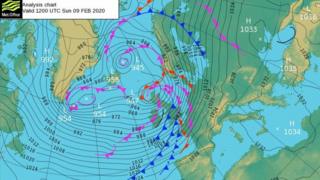 Image copyright
Image copyright
Met Office
Ever wondered why your village was suddenly flooded by a thunderstorm the weather forecasters hadn’t mentioned?
Or why they failed to warn you about the dense fog shrouding your home in the morning?
The fact is that predicting the “big picture” of future conditions has got a lot better – Storm Dennis was spotted six days before it arrived.
But getting local forecasts right – street by street and hour by hour – is still a massive challenge.
And that might now change as the Met Office secures the help of a supercomputer project costing £1.2bn.
Better forecasting means handling more data, more rapidly, and running it through simulations of the atmosphere more accurately.
Already the Met Office is pulling in more than 200 billion observations from satellites, weather stations and buoys out in the ocean every single day, and that’s set to increase.
And working out if a summer downpour will flood your home or one down the road requires more and more processing power.
Image copyright
Met Office
“We’ll be streets ahead of anybody else,” according to Penny Endersby, chief executive of the Met Office.
“Ultimately it’ll make a difference to every individual, every government department, every industry as people see forecasts becoming steadily better.”
It’ll be the biggest investment in the 170-year history of the organisation and will dwarf the £97m bill for the current supercomputer.
In the new project, the billion-plus cost will cover not just the hardware itself but all the running costs too over a ten-year period.
There’ll be a first stage installation, which should be six times more capable than the supercomputer used now.
And then five years later there’ll be a major upgrade to increase performance by a further three times.
It’ll run what the Met Office calls its “digital twin” of the Earth’s atmosphere, a highly detailed “model” of everything from the winds to the temperatures to the pressures.
Image copyright
Met Office
To create this simulated picture of our weather, the globe is divided into grid squares.
These have become smaller as the technology has advanced – and the smaller the better because that means more accuracy.
At the moment, the model of Earth is divided up into a grid of squares that are 10km across.
The UK gets more detailed treatment: its squares are 1,500m across.
London is studied with the aid of even smaller squares – 300m wide – mainly to improve the accuracy of forecasts for the airspace above the big airports.
And the ambition, when the new supercomputer is up and running, is to operate at an even sharper resolution, down to a scale of 100m.
The Met Office certainly believes it will. There’s huge demand for better forecasting – from the military to the power companies to organisers of big outdoor events.
It could guide Environment Agency teams deploying mobile flood barriers or help the National Grid balancing fluctuations in wind and solar power.
Image copyright
Met Office
And the prospect of rising global temperatures fuelling new and more dangerous extremes of weather makes accuracy all the more important.
There has been a huge improvement in recent years – every passing decade has seen forecasts reach a whole day further into the future.
A five-day forecast now is as accurate as a one-day forecast 40 years ago.
So will the new computing power continue that advance? Penny Endersby prefers not to be make any promises.
“I won’t hang my hat on getting another day in the next decade,” she says. “But it will make our forecasts more accurate, more timely and more localised.”
And the government has calculated what that could mean in hard cash: that for every pound invested, there should be £19 in economic benefit.
That’s the aim, with the digitally-simulated atmosphere also run far into the future to explore the effects of a hotter world.
The effects of the rise of 1C over the past 150 years are still not fully understood, let alone those of bigger increases to come.
It should mean researchers can add more detail to their projections, weaving in factors such as the way nitrogen reacts with the carbon in the air.
And as the UK moves towards its target of net zero emissions by 2050, there’ll be a chance to explore different options for how the country uses the land.
For example, what will the effects be of planting new forests or protecting peat bogs or growing more biofuels?
Like any huge IT installation, it’ll certainly need a massive supply of electricity.
That’s why the Met Office is inviting the potential providers to come up with low-carbon options.
And that’s led to a radical idea. The last 14 Met Office computers have all been housed in the UK – and the new one might not be.
Around half of the processing work – the research devoted to climate change – could be located in countries blessed with easy sources of clean energy.
Iceland with its geothermal sources and Norway with its hydropower are both possibilities.
The offer is only open to countries in the European Economic Area – locating the facility on another continent has been ruled out because of the time lag in using a distant connection.
Invitations to the IT industry to bid for the project are being drawn up and will go out near the end of the year.
And the start date for the new machine will be sometime in late 2022.

Environment

| Scottish Cup fifth round: Hamilton Academical v Rangers |
|---|
| Venue: FOYS Stadium Date: Saturday, 8 February Kick-off: 12:30 GMT |
| Coverage: Live on BBC Radio Scotland, text updates on BBC Sport website & app |
Steven Gerrard wants Rangers to build on an “extremely positive” second-half show against Hibernian as they try to reach the Scottish Cup quarter-finals.
A late Ianis Hagi goal sealed a comeback win on Wednesday to keep Rangers seven points behind Celtic.
And the Ibrox boss wants a similar approach in their last-16 cup tie at Hamilton Academical on Saturday.
“I’ll be looking for the same standards, people being really tuned in to get the right result,” said Gerrard.
“This is a club that demands that you give everything in every competition, you can’t pick and choose.
“We’ll be going to Hamilton in decent shape, certainly on the back of the second-half performance against Hibs, which was extremely positive and very close to where we’ve been for most of the season. Hopefully we can take off from there.”
Having fallen behind, Rangers drew level with Hibs in first-half stoppage time and went on to dominate the rest of the match, pinning the visitors back for long stretches.
“It was a really strong 45 minutes,” said Gerrard. “Collectively, everyone was at it. Both in and out of possession, the intensity levels were exactly where I want them.
“We had 15 corners and I think it was the second most crosses we’ve put in in a game. We could have scored another two or three goals, but for their keeper and players not taking chances at the time.”
Midfielder Ryan Jack remains sidelined but on-loan Florian Kamberi is available after sitting out against parent club Hibs, with Gerrard saying there “won’t be wholesale changes” for the cup tie.
Rangers have won on their last nine visits to Accies but Gerrard remains wary of a side who drew at St Mirren on Wednesday after staying level with Celtic for 77 minutes despite a first-half red card for Jamie Hamilton last weekend.
“Every environment is different,” he said. “They are very effective on their pitch. They’ve got a good coach and they have players who can hurt you if you don’t defend properly.
“Every time we’ve gone there, they’ve tried to stay in the game for as long as they can. We’ve had to finish them off late on.”
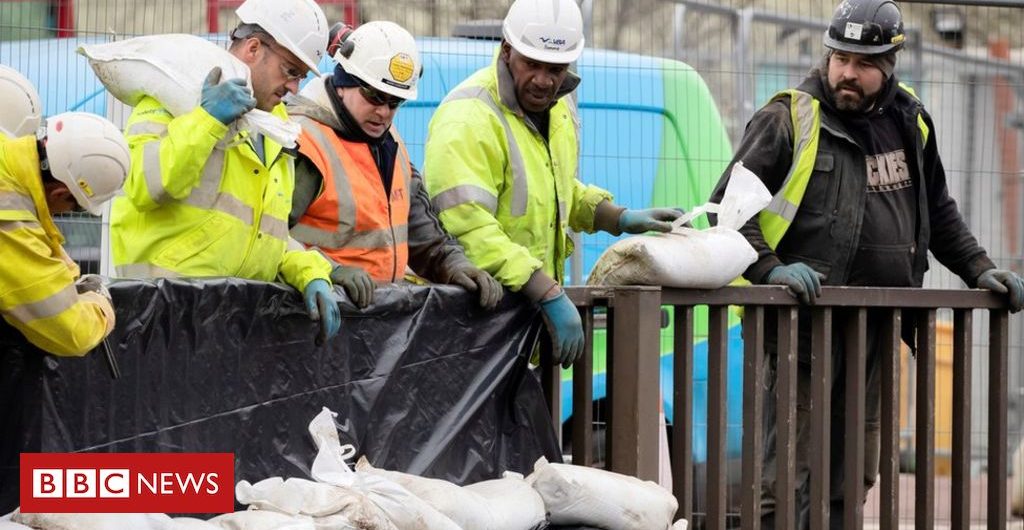
Environment
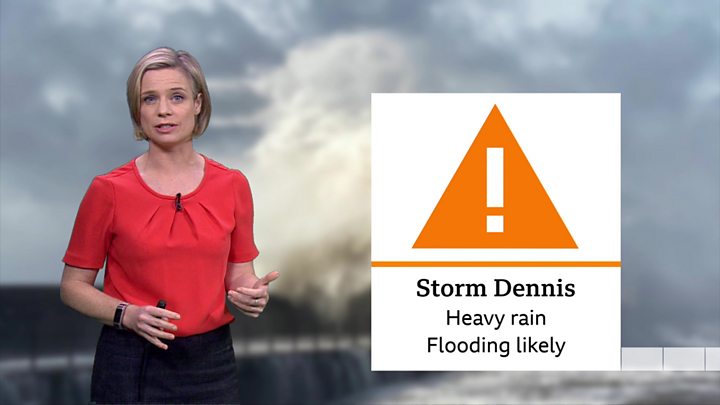
Media playback is unsupported on your device
The Army has been deployed to help with flood relief as the UK faces a second weekend of weather disruption.
Severe weather warnings are in place for much of the country and forecasters say a month’s worth of rain could fall in some places.
The MoD said 75 soldiers from 4th Battalion, Royal Regiment of Scotland, have been sent to Ilkley and Calderdale in West Yorkshire.
They are helping build flood barriers and repair defences.
A further 70 Reservists from 4th Battalion, The Yorkshire Regiment, will also be providing support where required.
Calderdale Council leader Tim Swift said their presence would be a “reassuring sight” for residents of “already exhausted communities”.
Meanwhile, heavy rain has been falling across southern Scotland leading to three severe flood warnings for the Hawick area in the Scottish Borders.
The Scottish Environment Protection Agency says river levels in the town are likely to reach similar levels to those experienced in January 2016 and will peak between 21:00-23:00 on Saturday.
A local leisure centre has been opened for anyone who has to move out of their homes.
Separate flood warnings and advice have also been issued for residents in the Borders, Dumfries and Galloway, South Lanarkshire and South Ayrshire.
Across the UK road, rail and air travellers also face disruption, with British Airways and EasyJet flights among those affected.
It comes after Storm Ciara flooded hundreds of homes last weekend.
The Environment Agency has warned flooding is likely to be worse this weekend as already saturated ground is met with a “perfect storm” of heavy rain, strong winds and melting snow.
Amber warnings for rain and yellow warnings for wind are in place for most of the country from Saturday afternoon into Sunday evening.
This means flooding could cause a danger to life, power cuts are expected and there is a good chance transport links will be impacted.
There are three severe flood warnings in Scotland, dozens of flood warnings in England, and seven in Wales.
Image copyright
PA Wire
A body has been found by rescue crews searching for a man reported to have gone overboard from a fuel tanker off Margate Harbour in Kent before the storm struck.
A coastguard helicopter, a Royal Navy warship and RNLI lifeboats joined the operation in heavy seas around Margate Harbour after the alarm was raised in the early hours on Saturday.
In other developments:
Image copyright
Getty Images
Sporting fixtures across Britain have been affected, with the Rangers v Livingston and Motherwell v St Mirren Premiership matches in Scotland postponed due to the weather, along with Rochdale v Tranmere and Swindon v Scunthorpe in England.
The worst-hit areas could see between 120-140mm of rainfall and gusts of up to 80mph over the weekend, the Met Office said.
The predictions are not as severe as last weekend when Ciara brought as much as 184mm of rain and gusts reaching 97mph, resulting in hundreds of homes flooding and more than 500,000 being left without power.
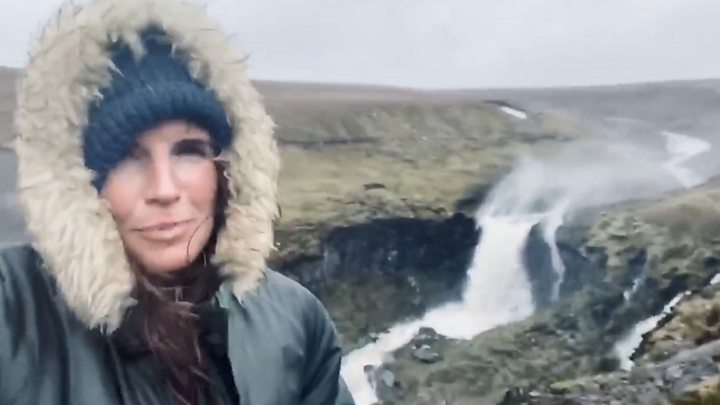
Media playback is unsupported on your device
But experts have warned Storm Dennis could cause more flooding damage, because of the heavy rain falling on parts of the UK still recovering from Ciara.
John Curtin, the Environment Agency’s executive director of flood and coastal risk management, said Cumbria, Lancashire and Yorkshire were the areas he was most “concerned” about.
“This [storm] could be a step up from what we have seen before,” Mr Curtin said.
“We had a big storm last weekend, [we now have] saturated catchments, snowmelt and rainfall, so it is a perfect storm.”
Getty Images
Weather warnings guide
YellowSevere weather possible, plan ahead, travel may be disrupted
AmberIncreased likelihood of impact, eg travel delays, power cuts
RedDangerous weather expected – take action to keep safe
Source: Met Office
The Environment Agency said preparations were under way to operate flood defences, flood storage reservoirs and temporary barriers to protect communities.
These include the Foss Barrier in York, the Thames Barrier in London and another in Bewdley, Worcestershire, on the River Severn.
UK power operators say they have employed extra engineers and call centre staff to respond to any possible impact of the storm, after widespread power cuts last weekend.
Newly appointed Environment Secretary George Eustice said he had spoken to local flood response groups across the country on Friday.
Highlighting the Environment Agency’s preparations, he added: “We are fully focused on ensuring that communities are protected and have access to the support and advice they need to stay safe this weekend.”
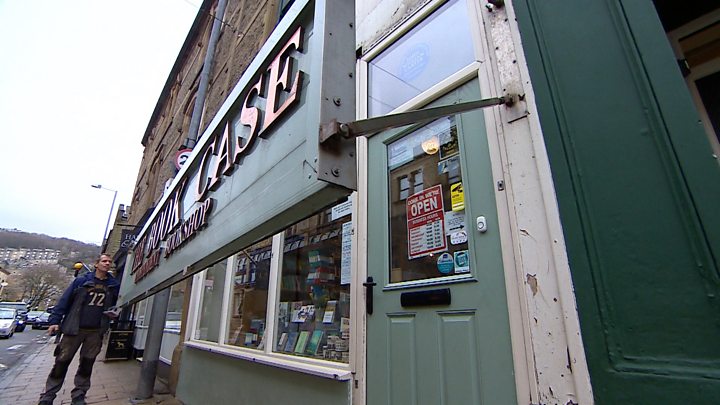
Media playback is unsupported on your device
The Met Office has issued amber warnings for rain in pockets of northern and south-west England and Wales from 12:00 GMT on Saturday until 15:00 on Sunday, and in parts of Scotland from 12:00 GMT to 20:00 on Saturday.
An amber warning is also in place for most of southern England from 00:15 GMT until 18:00 on Sunday.
Yellow warnings for strong winds and heavy rain also cover all of England, Wales and southern Scotland between 09:00 GMT and midday on Sunday.
Further yellow warnings for wind are in place for northern parts of the UK from midday on Sunday until midday on Monday – potentially bringing travel disruption to commuters.
Have you been affected by Storm Dennis? Get in touch by emailing haveyoursay@bbc.co.uk.
Please include a contact number if you are willing to speak to a BBC journalist. You can also contact us in the following ways:
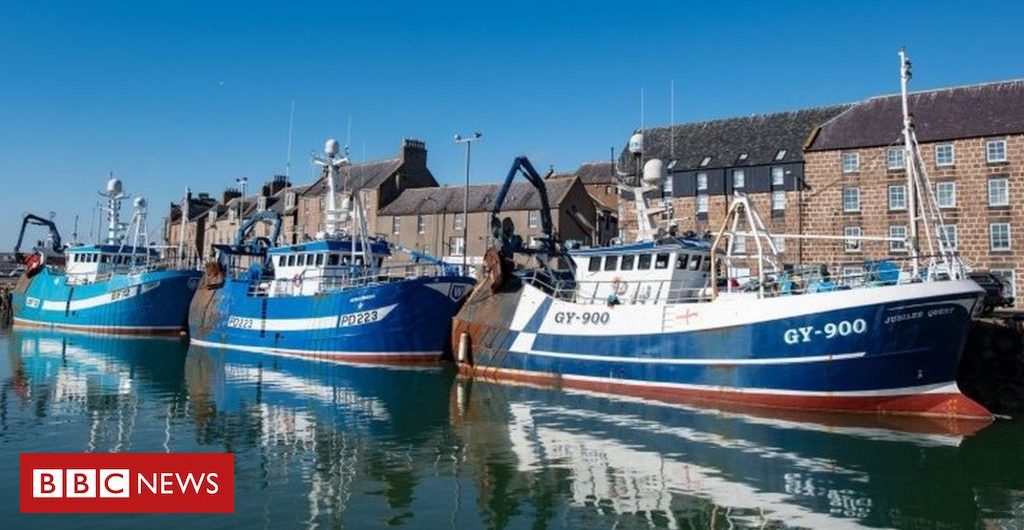
Environment
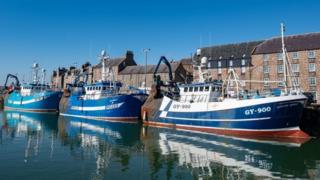 Image copyright
Image copyright
PA Media
All fish stocks in UK waters will be fished at sustainable levels after Brexit, the government says, as it publishes new legislation.
The Fisheries Bill gives the UK power to operate as an independent coastal state and guarantees it will quit the EU Common Fisheries Policy in December.
Environment group Greener UK welcomed the focus on sustainability.
But fishing is likely to be a key area of contention in post-Brexit trade talks between the EU and UK.
The Common Fisheries Policy currently sets out how much British fishermen can catch and where.
It also allows vessels registered elsewhere in the EU to fish in UK waters – but the new legislation will end those automatic rights of access.
Instead, access will be for the UK to negotiate in the future and foreign vessels will have to be licensed if they fish in British waters.
Earlier this week, Irish Prime Minister Leo Varadkar told the BBC the UK “may have to make concessions (in a future EU trade agreement) in areas like fishing in order to get concessions from us in areas like financial services”.
But Environment Secretary Theresa Villiers insisted the bill “takes back control of our waters”.
She said it would enable the UK “to create a sustainable, profitable fishing industry for our coastal communities, whilst securing the long-term health of British fisheries”.
She added that leaving the “failed” Common Fisheries Policy was “one of the most important benefits of Brexit”.
The bill sets down in law that all fish stocks must be fished at sustainable levels, and aims to ensure species such as dolphins are protected.
It also includes measures on “climate-smart fishing” to consider the impact of climate change on the sector – for example, if fish populations move as a result of rising temperatures.
Patrick Killoran, from Greener UK – a coalition of 13 environmental organisations – said the focus on climate change and sustainability was “very helpful”.
“It recognises that vibrant fisheries create a healthier wider environment,” he said.
“However, this will only work if the government closes loopholes in the last bill that allowed ministers to exceed fishing limits.”
He said more detail was need on “how the government will actually ensure sustainable fishing”.

Environment

Media playback is unsupported on your device
Properties in Bury and Ramsbottom have been evacuated after the River Irwell burst its banks during Storm Ciara.
Residents were urged to “take precautions immediately” and Bury Council set up a “rest centre” at Castle Leisure Centre in the town.
The council said 13 homes in the Redvales area had been evacuated. It is not yet known how many homes in nearby Radcliffe and Ramsbottom are affected.
The Environment Agency has warned residents to be “vigilant”.
However, it also said the water levels had now begun to subside.
Doreen Fillingham, whose home on Radcliffe Road in Redvales was hit by floods in 2015, said residents were “fed up of all this”.
“We lost everything the first time and I’ve just had a new carpet put down,” she said.
“It’s a waiting game. They keep saying they’re doing the flood barriers, but nothing seems to be getting done.”
Joel Wakelyn, who lives in the Summerseat area, said: “We woke up about 07:30 to about four or five inches of water in the kitchen and living room. It was black water.
“It had all washed through from the road. It’s absolutely devastating.”
Nicola Crook said her three-year-old daughter was her “main concern” as she left her flooded house in Strongstry in Ramsbottom.
She said: “We just wanted to get out. The water was coming up through the floor.”
Bury Council said all residents – and their pets – affected by flooding were welcome at the leisure centre, which is currently closed to customers.
Alan Quinn, the council’s floods lead, said the town’s flood defences had lessened the impact as if they “weren’t there, things would have been as bad as the Boxing Day floods of 2015”.
However, he added he had been with “a poor householder who has been flooded out four times – in 2009, 2012, 2015 and now – and they said it’s just soul-destroying”.
In central Ramsbottom, Kenyon Street has flooded and the fire service is pumping out houses.
Manchester Road, near Park Farm, has also flooded with stranded cars that tried to get through the standing water.
Anna Jameson, BBC Radio Manchester
Dozens of people are gathered at the Castle Leisure Centre in Bury, after having to leave their homes in Redvales.
This isn’t their first experience of flooding – it happened as recently as Christmas 2015.
Dozens of homes in the Warth Road area – a mixture of social and privately-owned houses – have been affected after the nearby River Irwell burst its banks.
People were advised to evacuate by Environment Agency staff, and many who are now at the leisure centre just don’t know the state of their homes.
They have been given hot drinks, slippers and clothes and council leader David Jones and Bury North MP James Daley have visited.
But some here feel angry that it’s happened again and want to know why the area’s flood defences appear not to have worked in all areas of the town.
Image copyright
@itscarlhartley
The A56 near Ramsbottom remains flooded and Nuttall Park in the town is completely under water, including the play area.
Close Park in Radcliffe has also been flooded.
North of Bury, in Lancashire, the centre of Rawtenstall was flooded and Crawshawbooth and Helmshore have both had areas affected by rising water.
Across Greater Manchester, fallen trees have affected Metrolink trams, and floods have affected rail services, caused road closures and forced the postponement of Manchester City’s clash with West Ham.
Manchester Airport recorded gusts of 86 miles per hour as planes struggled to land.
Northern has cancelled more than 140 trains across the north of England with the rail firm issuing a warning to passengers not to travel between Todmorden and Rochdale.

Environment

Two West Ham fans have been arrested after allegedly making homophobic gestures towards Brighton supporters.
The pair have been released by police under investigation following Saturday’s 3-3 draw, watched by a crowd of nearly 60,000 at London Stadium.
Reports of homophobic abuse have been made at several clubs this season.
In December, police were contacted on social media to report chanting by West Ham away fans directed at Chelsea supporters at Stamford Bridge.
On Saturday, a West Ham fan was also arrested on suspicion of assault although this is not being directly linked with the other arrests.
“Two male West Ham fans were arrested on suspicion of making homophobic gestures,” a Metropolitan Police spokesperson told BBC Sport.
“One male (also a West Ham fan) was arrested on suspicion of common assault.
“They were taken to east London police stations where they were subsequently released under investigation. Enquiries continue.”
In a statement, the club said: “West Ham United is disgusted to hear of alleged homophobic incidents at the game against Brighton & Hove Albion. The matter is now with the police but anyone found guilty of acting in a discriminatory manner will be banned for life from London Stadium and from travelling with the club.
“The club is unequivocal in its stance – we have a zero-tolerance approach to any form of discrimination. Equality and diversity is at the heart of the football club and we are committed to continue ensuring that everyone who enters London Stadium is free to enjoy watching their team play football in an inclusive environment.”
In January, one home supporter and one visiting fan were ejected from Brighton’s Amex Stadium during the match against Chelsea for alleged homophobic abuse towards opposing fans.
In December, Brighton said that two visiting supporters were arrested on suspicion of homophobic abuse during the home match against Wolves.
And some Everton fans were alleged to have directed homophobic chants towards Chelsea fans during a 3-1 win at Goodison Park in December.
Millwall’s match against Reading in the Championship in January was halted briefly by the referee after reports of homophobic chanting.
However, Millwall said a “thorough and exhaustive” investigation had produced no evidence to support the claims and the club was “outraged” by some media coverage which they believed implied guilt.
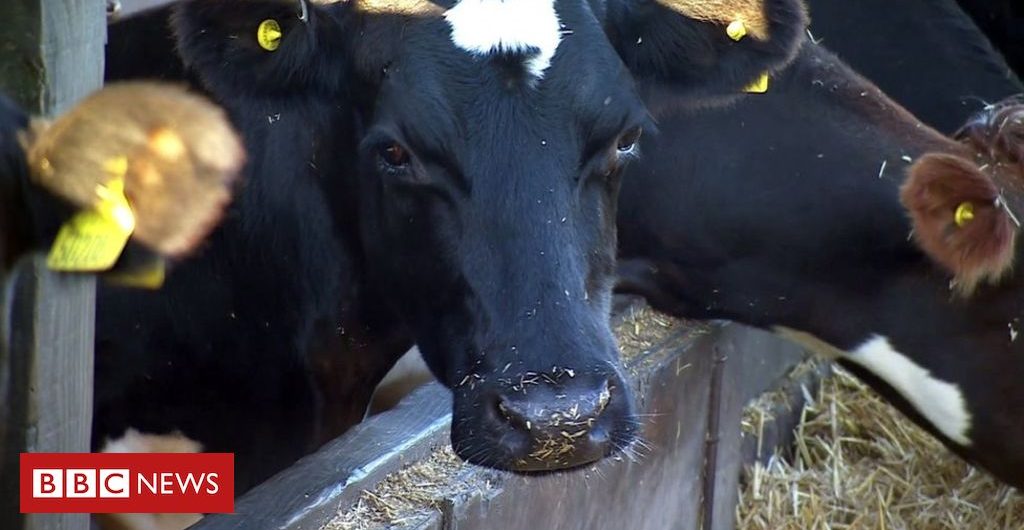
Environment
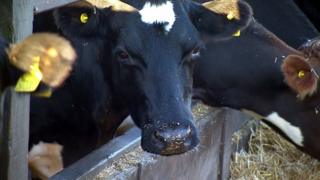
People should cut the amount of beef, lamb and dairy produce they eat by a fifth to combat climate change, a report says.
It says public bodies should lead the way by offering plant-based options with all meals.
But it says if people don’t cut consumption willingly, taxes on meat and dairy might be needed.
The report comes from the government’s official advisers, the Committee on Climate Change (CCC).
Its chief executive Chris Stark told BBC News: “We can’t meet the government’s 2050 Net Zero target without major changes in the way we use the land, the way we farm, and what we eat.”
The farming union NFU welcomed much of the report, although they oppose cuts in livestock – but some environmentalists believe it’s too timid.
‘Greening’ the countryside
The document recommends a host of measures to cut greenhouse gas emissions from the countryside.
Others include increasing UK forestry cover from 13% to at least 17% by 2050, and restoring at least half of upland peat bogs.
But it’s the proposals for reducing consumption of dairy produce and red meat that are likely to draw attention.
The authors say reducing the amount of beef, lamb and dairy we eat by at least 20%, and reducing food waste by 20% would save the equivalent of seven million tonnes of CO2 from farms.
They say land that’s no longer needed for cattle and sheep could support trees crops to burn for energy.
Fewer sheep and cows expected
The authors anticipate around a 10% drop in cattle and sheep numbers by 2050 against 2017 levels. They say there’s already been a reduction of around 20% in the past two decades.
Some upland farmers argue that on thin soils, the only productive use of the land is for livestock.
Minette Batters, NFU President said: “Plant-based products do not always necessarily have a lower impact on the environment.
“Of British land, 65% is only suitable for grazing livestock and we have the right climate to produce high quality red meat and dairy. Therefore it makes sense that, when talking about environmental impact, the public continues to support British livestock production.”
The report says: “Grasslands can have a positive impact on soil quality (by storing carbon in the soil) but grassland cannot continuously increase its carbon store.
“This means grassland cannot be used continually to offset methane emissions from livestock.”
The broad-ranging document also says farmers must use fertilisers more intelligently. They should deal with animal manure better, and reduce food waste.
Peatland burning ‘should be banned’
The report urges a ban on regular burning on peatland, and a ban on peat extraction.
Controversially, the committee recommends expanding crops grown to be burned for energy to around 23,000 hectares each year.
This is resisted by food charities such as the Sustain Alliance. Its spokesperson Vicki Hird said: “The emphasis on energy crops to feed power plants is dangerous – it could damage biodiversity and ecosystems as well as our food security.”
New forests could be funded by aviation levies
The Committee says land use – that’s farms, forests and peatland – accounted for 12% of total UK greenhouse gas emissions in 2017.
But by 2050, it says, farmers and land-managers must reduce these emissions by almost two thirds for the UK to meet its targets.
New forests, it urges, should be funded by a levy on greenhouse gas-emitting industries such as aviation.
Increasing forestry, the report says, will provide woods for recreation, clean the air, filter water and capture flood waters on the land.
The re-wilding campaigner George Monbiot said the report contained “feeble half-measures”.
He said: “The level of ambition is in no way matched to the scale of our climate and ecological emergencies.
“People in the UK are already reducing their red meat consumption.
“A 10% reduction in cattle and sheep numbers by 2050 is likely to be much smaller than the shift that’s going to happen anyway, without the help of the measures the committee proposes.”
Follow Roger on Twitter.

Environment
 Image copyright
Image copyright
AIRBUS

Europe’s Mars rover, Rosalind Franklin, has just completed a key set of tests ahead of its planned summer launch.
The robot was put in a thermal-vacuum chamber by manufacturer Airbus for several weeks, to simulate the hot and cold conditions it will experience on the way to the Red Planet.
Further evaluations are now planned for the vehicle’s various sub-systems.
The European Space Agency rover is scheduled to leave Earth sometime between 26 July and 11 August.
Rosalind Franklin – a joint endeavour with the Russian space agency – is being equipped with instruments to look for signs of present or past life on Mars.
Given the harsh present-day environment on the planet, any biology is most likely to be found underground – and the robot will carry a drill to dig down up to 2m to find the samples for its on-board laboratory to investigate.
Once all the testing is finished at Airbus’s factory in Toulouse, France, Rosalind Franklin will be moved to Cannes.
It’s in the Mediterranean town that prime contractor Thales Alenia Space (TAS) has one of its main satellite integration facilitates.
TAS will introduce the rover to all the other hardware elements needed for the mission.
These comprise a “cruise stage” stage, an entry capsule and a rocket-powered descent platform.
Image copyright
NASA/JPL-Caltech
They carry the rover to Mars, protect it during the high-speed atmospheric entry, and, finally, put the robot softly down on the surface of the planet.
All these hardware elements are currently going through their own parallel test phases.
The one issue causing a degree of concern at the moment is the parachute system that will be released at supersonic speeds to slow Rosalind Franklin as it heads down to Mars’ surface.
The material in these envelopes was tearing in rehearsals last year.
Esa called in the US space agency (Nasa) to help it get to the bottom of the problem, which seemed to relate to the way the chutes were folded in their containment bags.
ExoMars will have four parachutes. Two main parachutes – at 15m and 35m in diameter – and two much smaller companion drogue chutes.
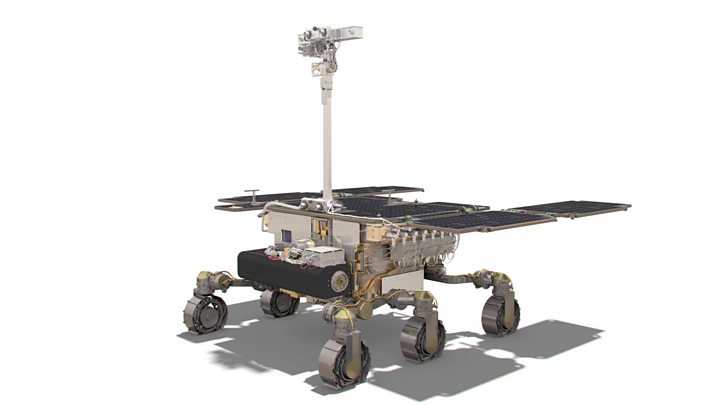
Media playback is unsupported on your device
Nasa has been running parachute deployment tests using modified bags. The tests are carried out on a high-velocity wire at the American agency’s Jet Propulsion Lab in California.
“We started a sequence of ground tests and we reported publicly before Christmas that the first three were successful,” said Dr David Parker, Esa’s director of human and robotic exploration.
“I can tell you a fourth test happened on Monday which was the full deployment speed of the large main parachute – so 50m/s deployment of the 35m parachute – and it also was successful.
“We are now shifting our focus to doing two high-altitude drop tests to be carried out in Oregon in the US using the modified bags.
“They’re planned for February and March, and only when we’ve completed those tests will we know that we have a system that’s safe to launch.”
If the drop tests, which will be conducted from stratospheric balloons, repeat past tearing or show up new problems, the rover mission will have to be postponed.
This would mean a delay of two years. This is the period it takes for Mars and Earth to realign their orbits.
Such a postponement would add cost the project but Esa is not revealing what that would actually entail for commercial reasons. It prefers instead to concentrate on getting the current hardware mission-ready.
“We don’t think too much about Plan B because if you do, it’s already become Plan A,” said Bernardo Patti, a senior official in the human and robotic exploration directorate.
“We are engineering positive. People are working incredibly hard. You should see the commitment,” he told BBC News.
Image copyright
ESA
Jonathan.Amos-INTERNET@bbc.co.uk and follow me on Twitter: @BBCAmos